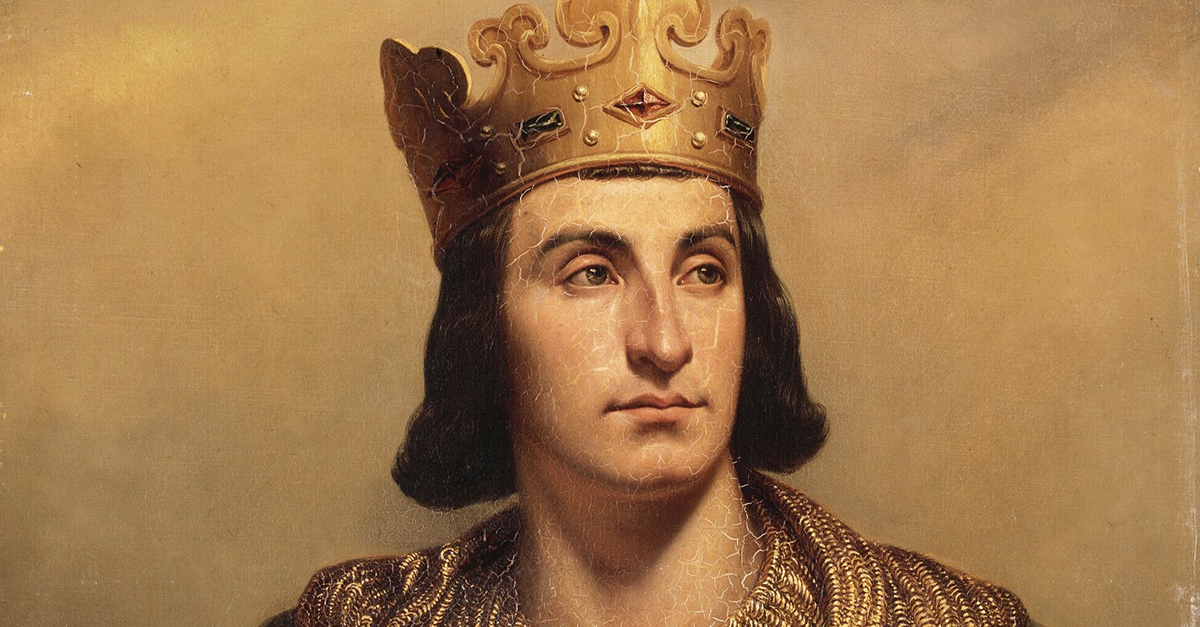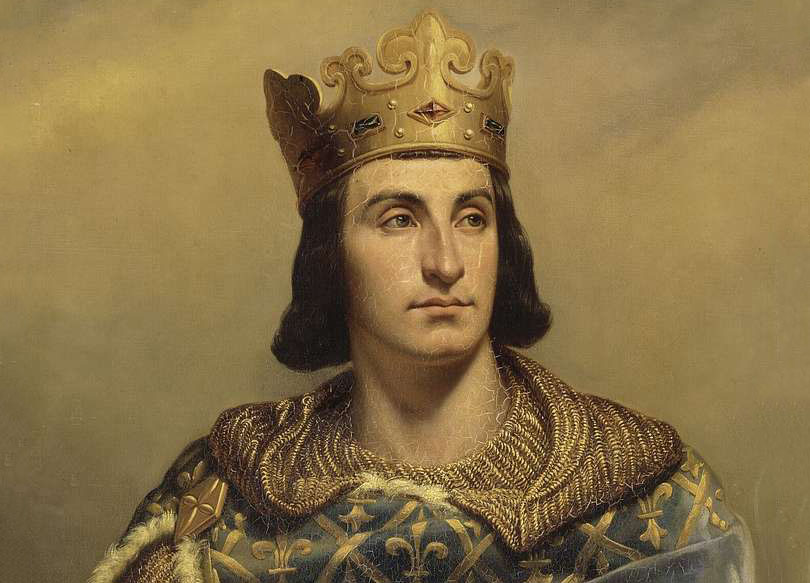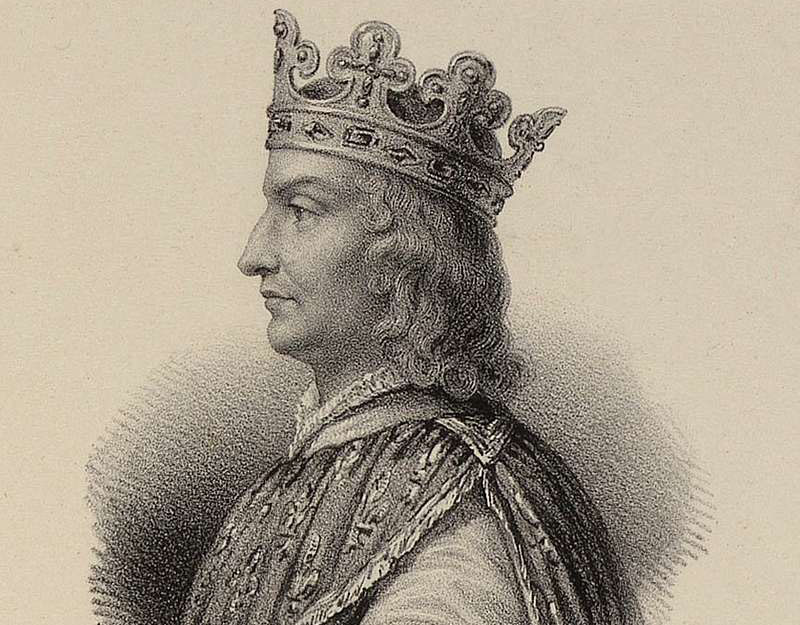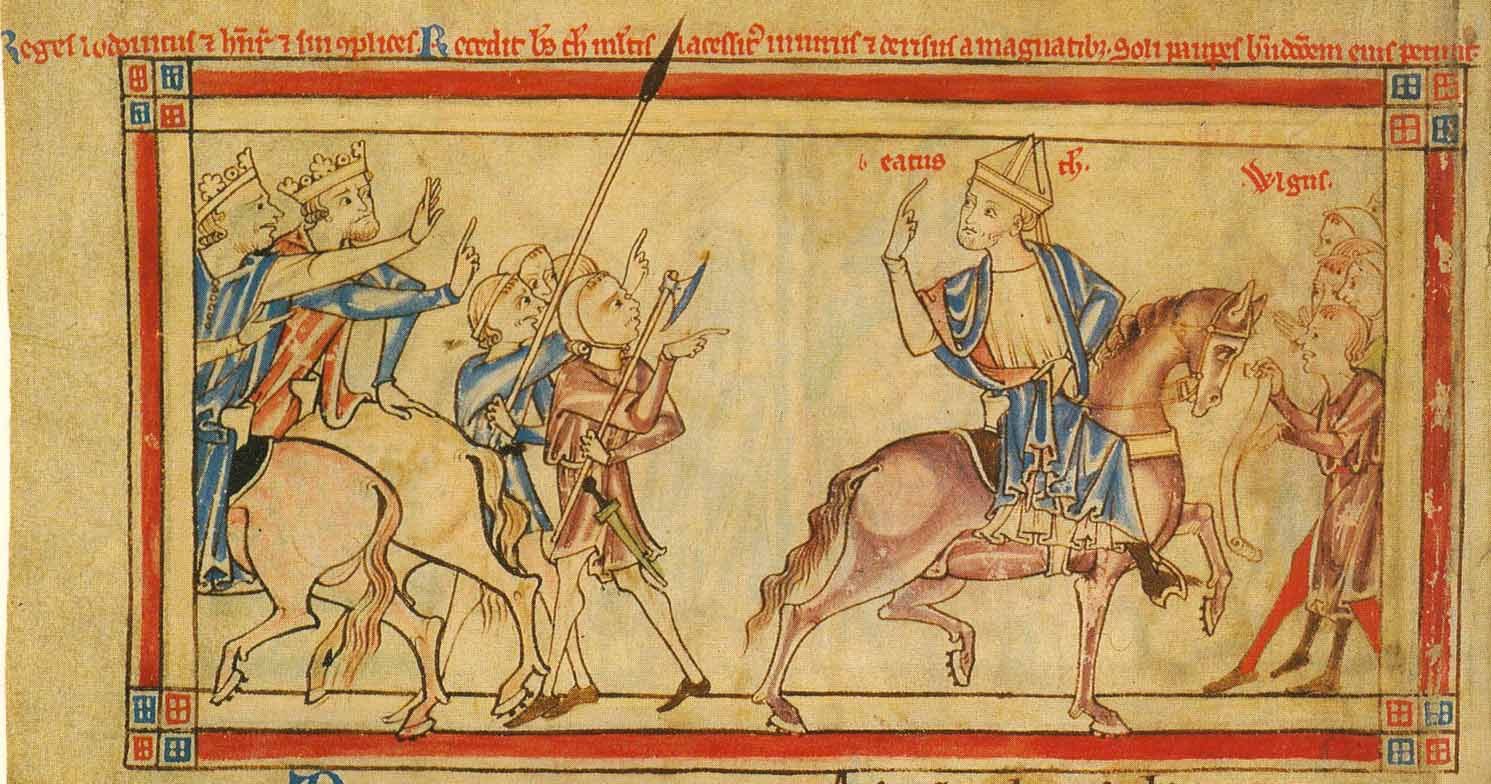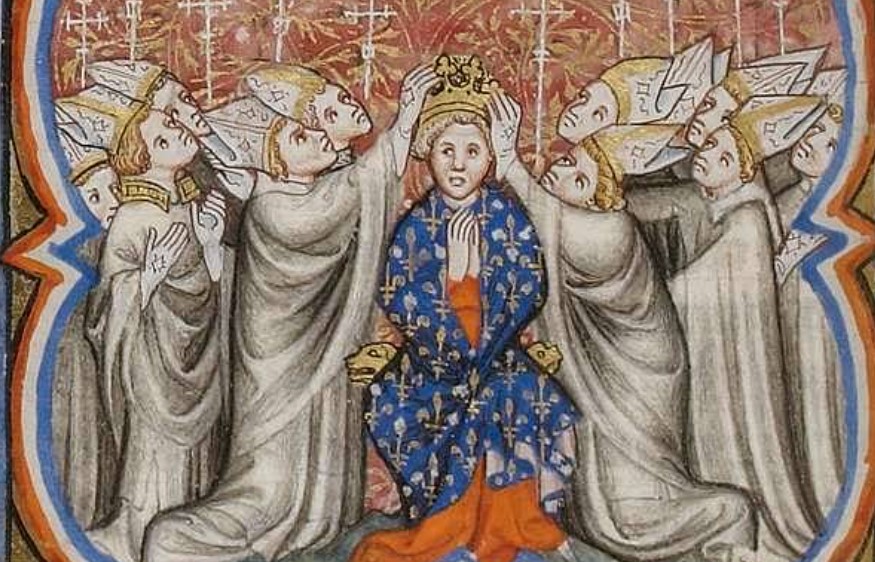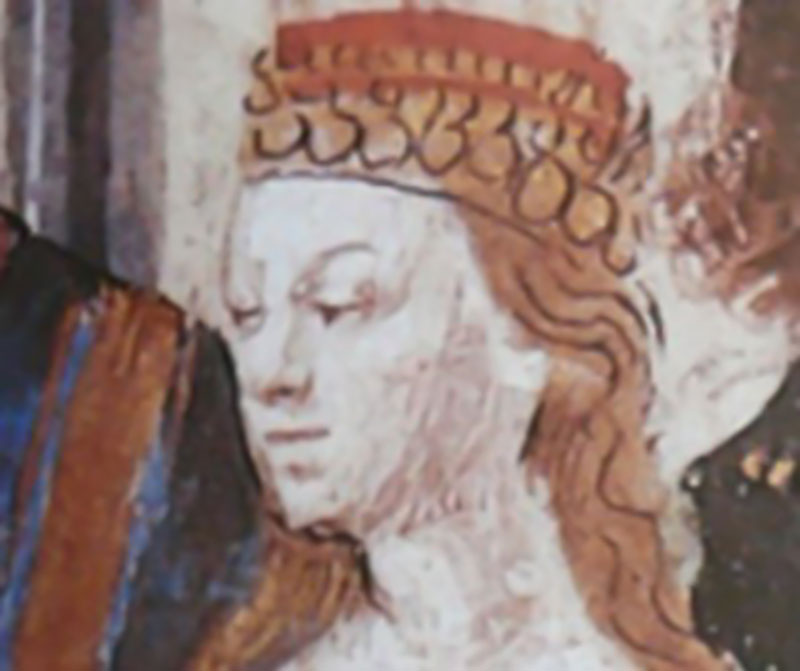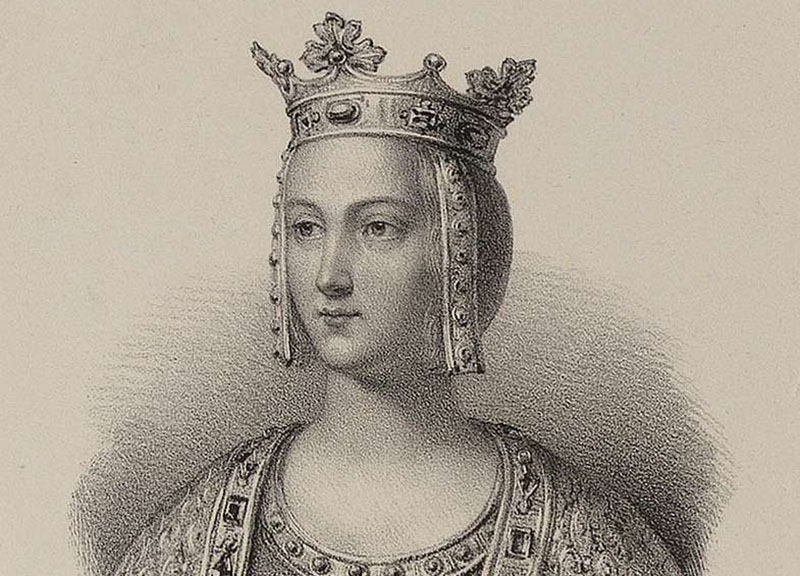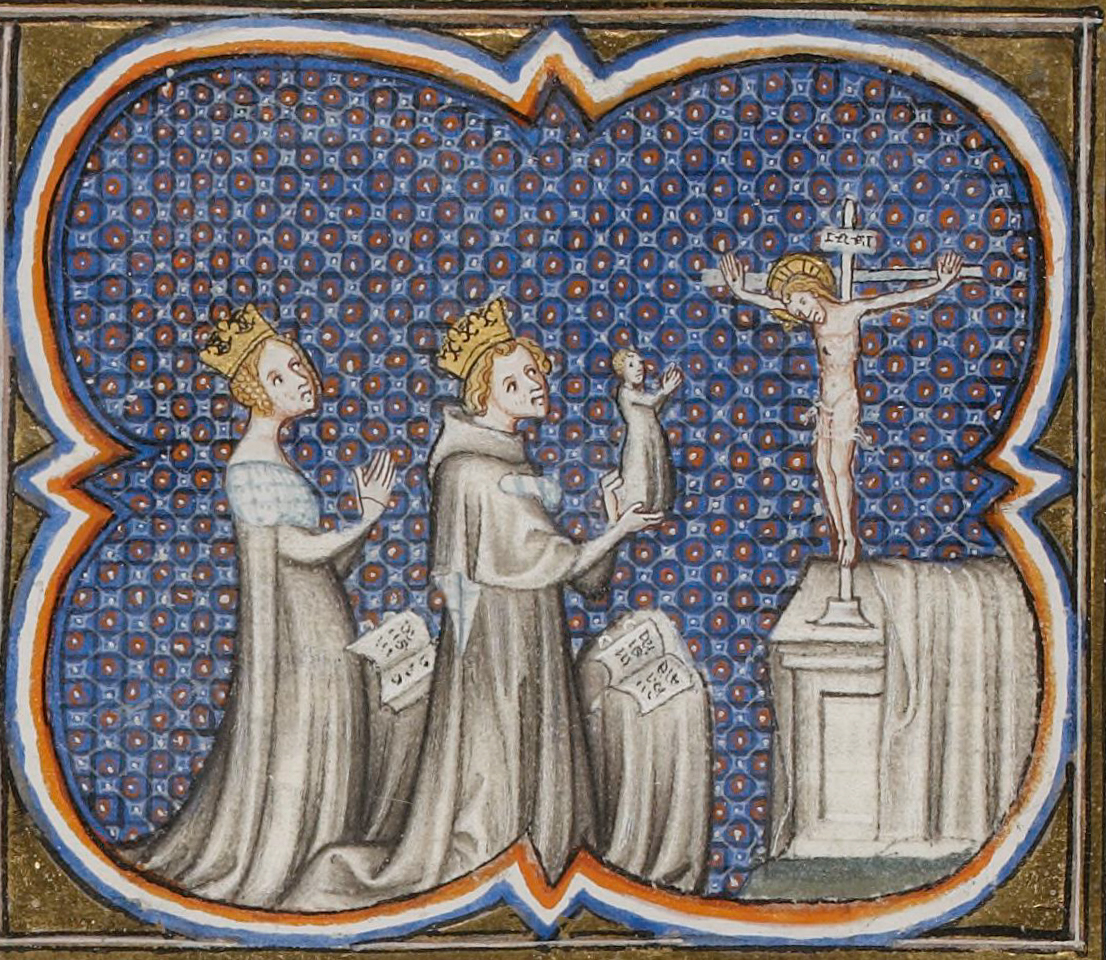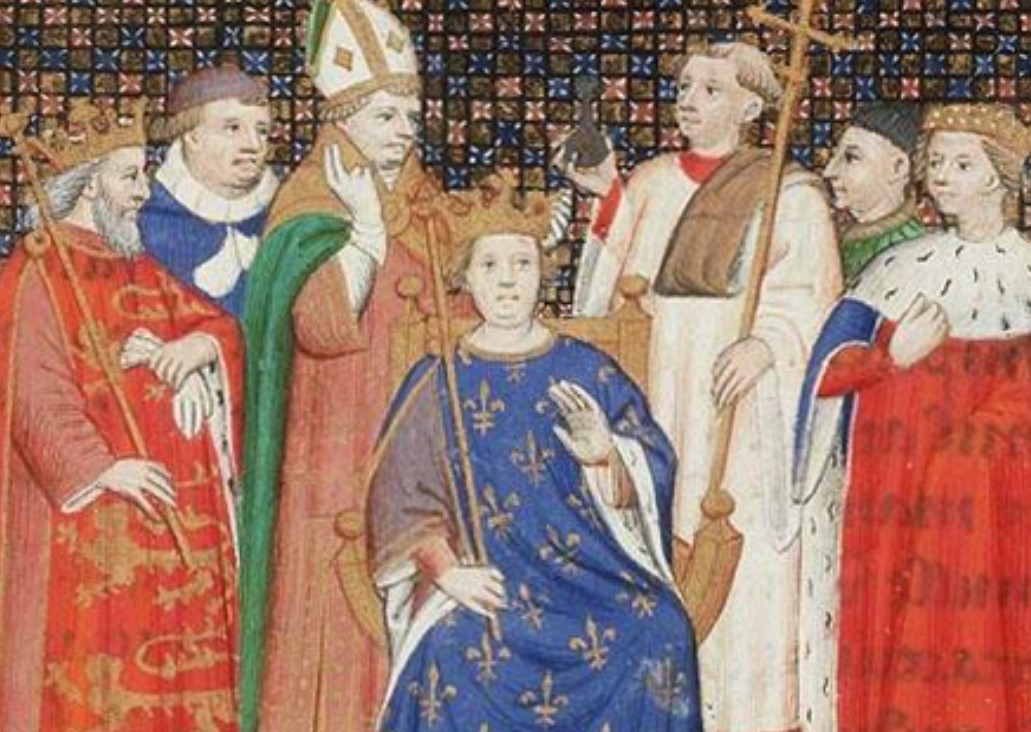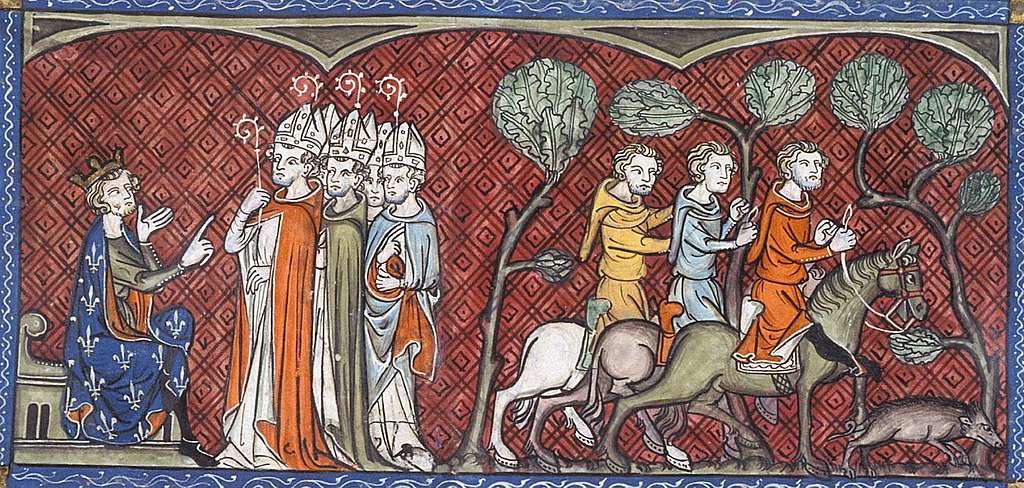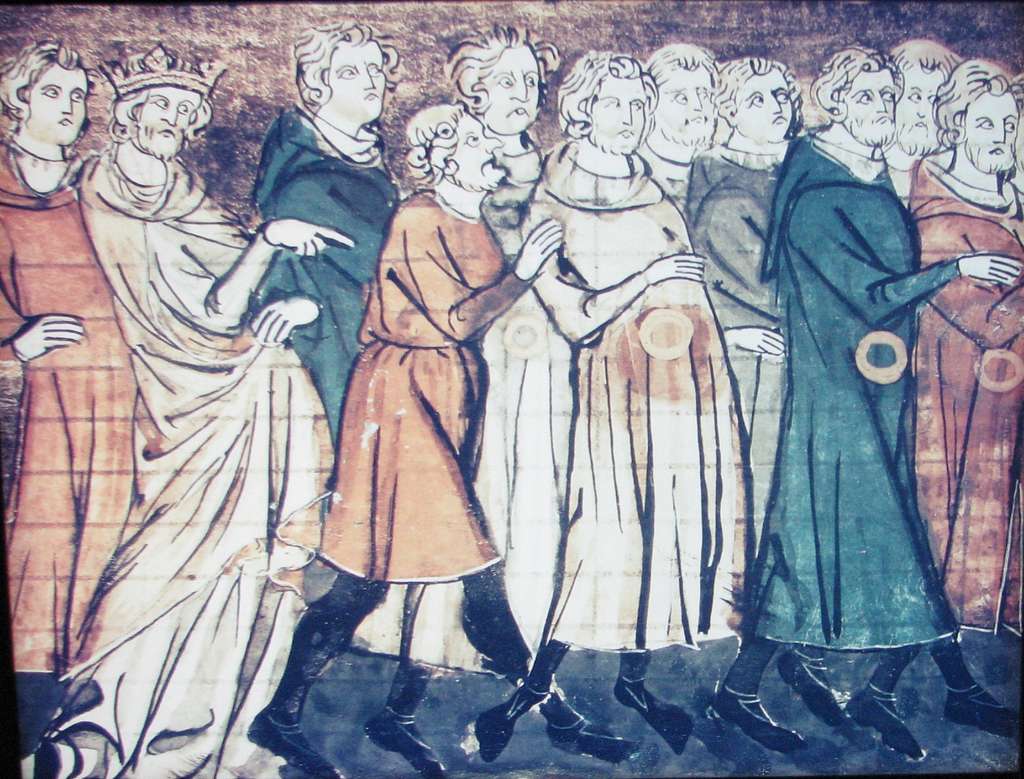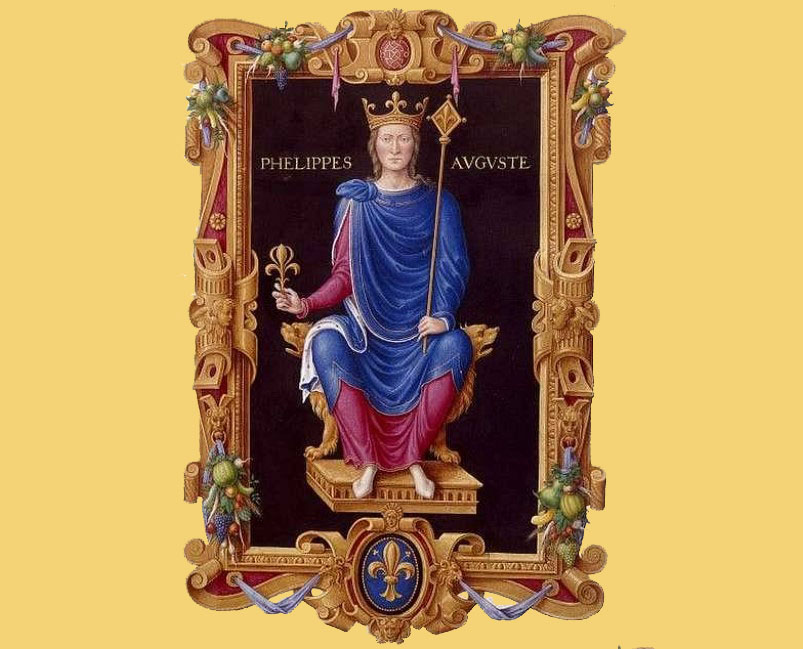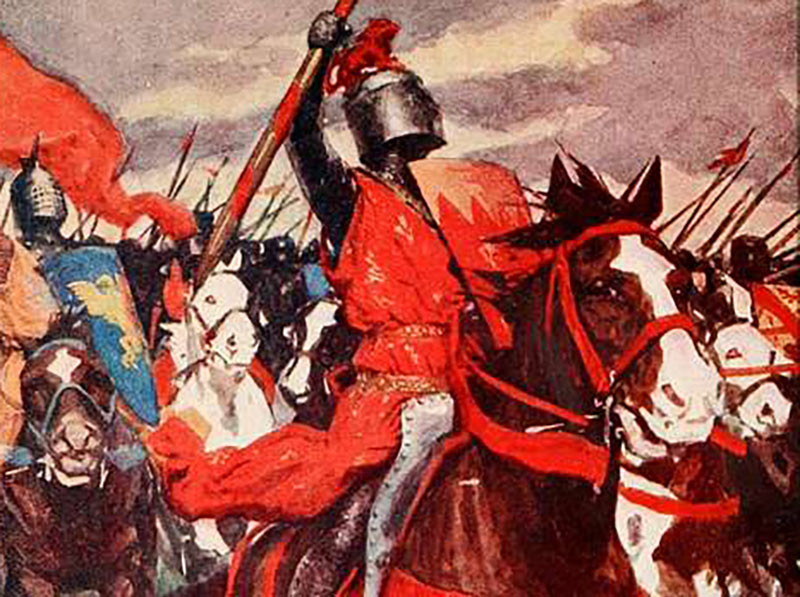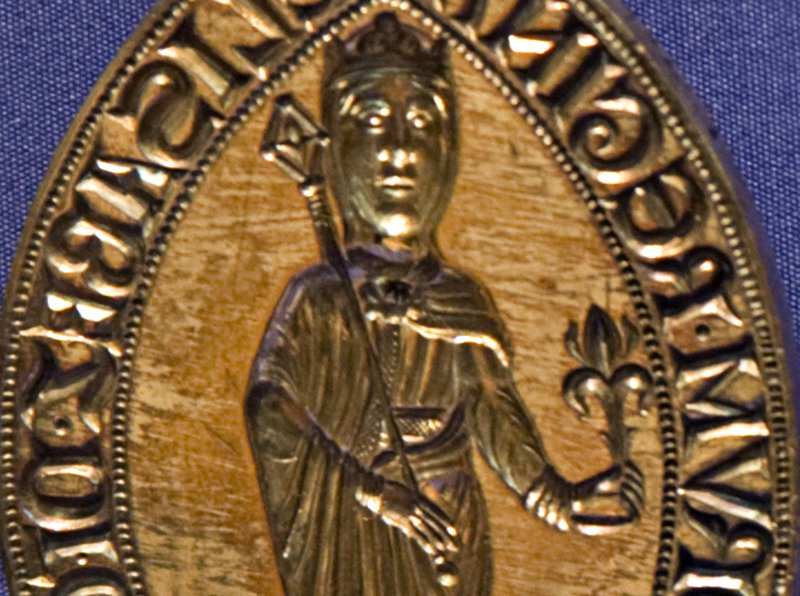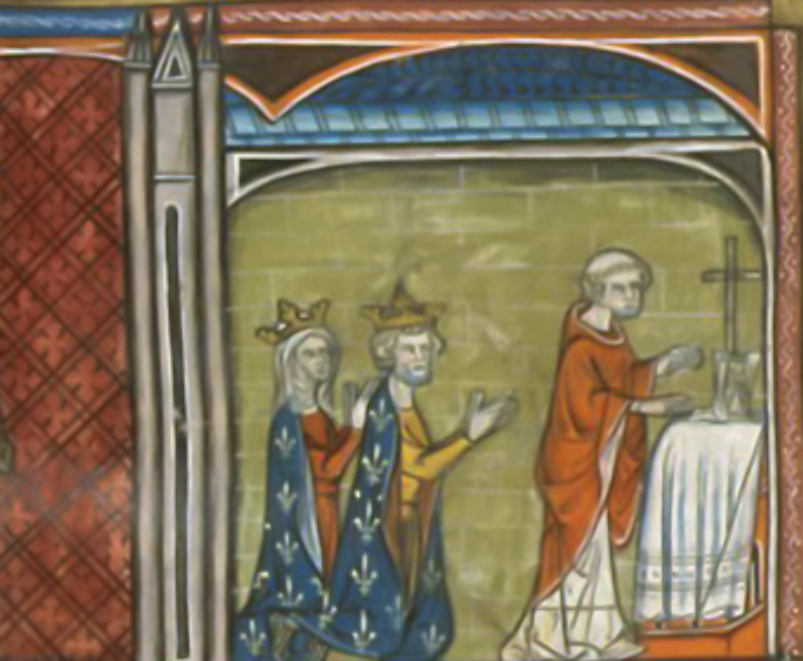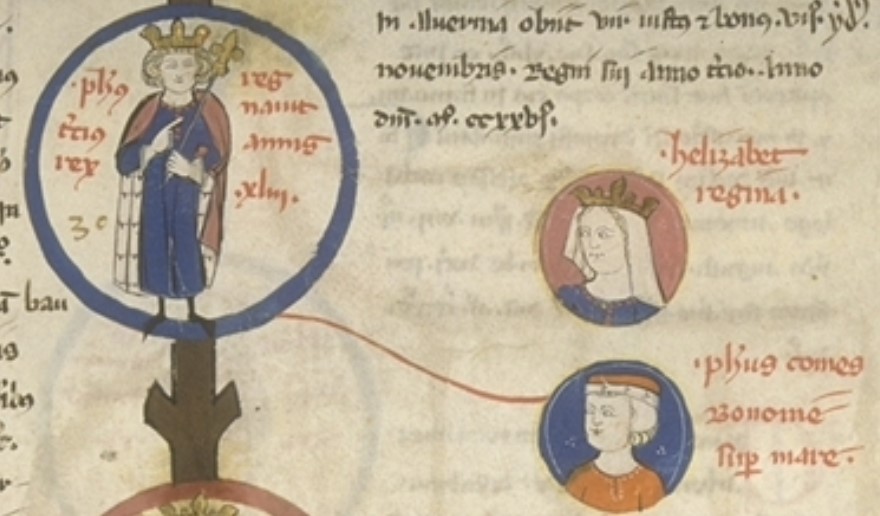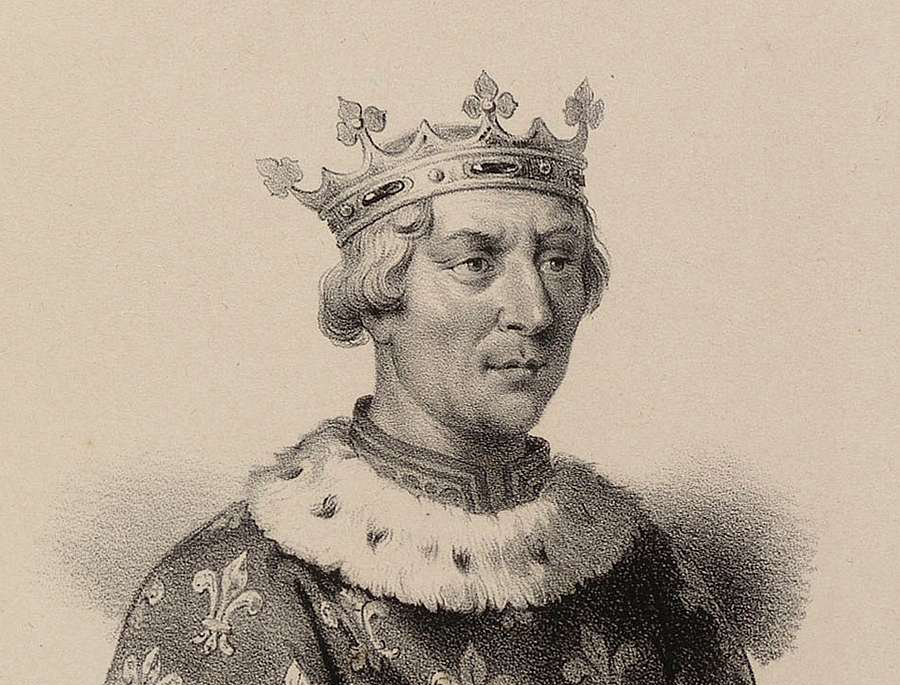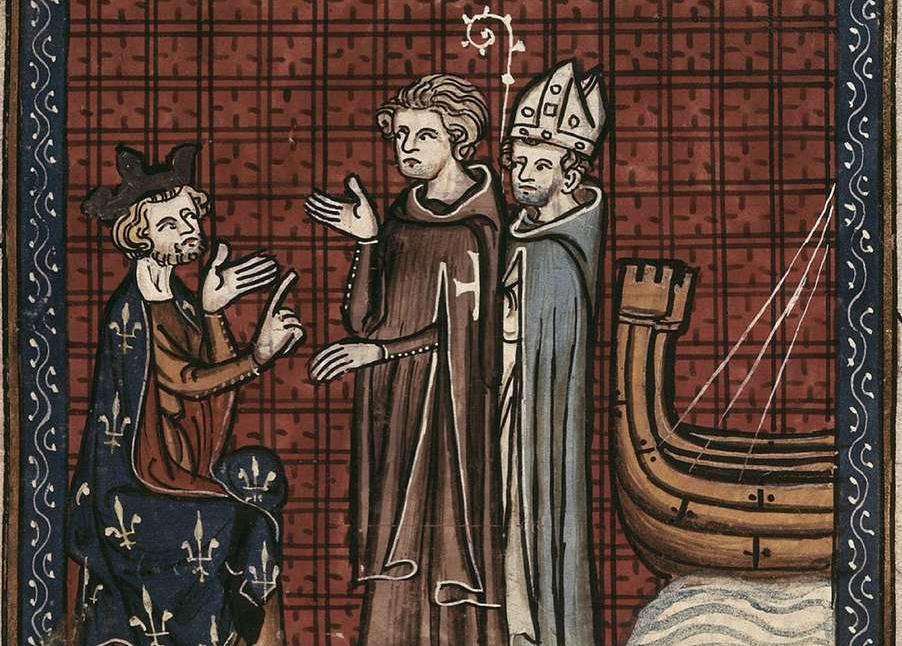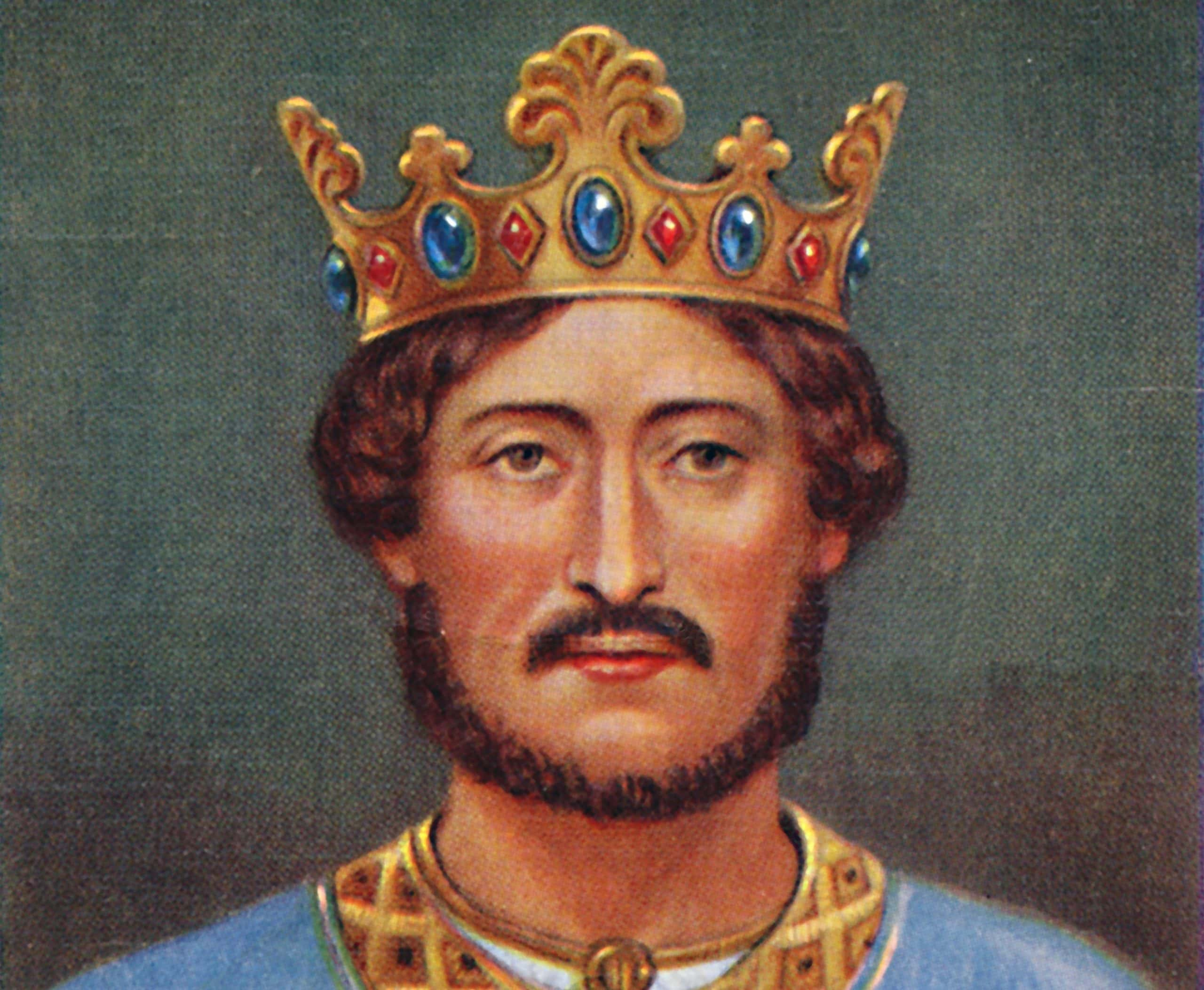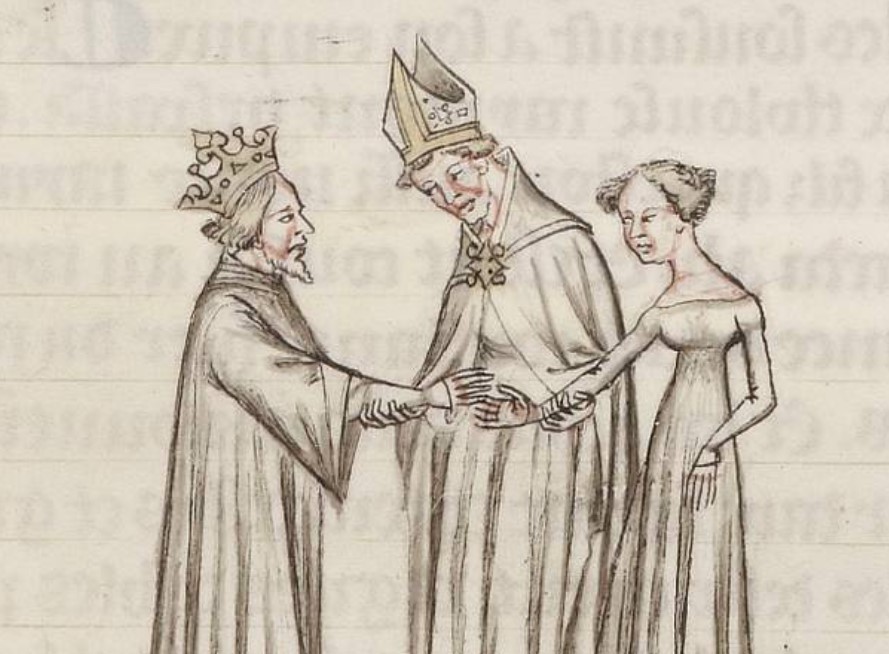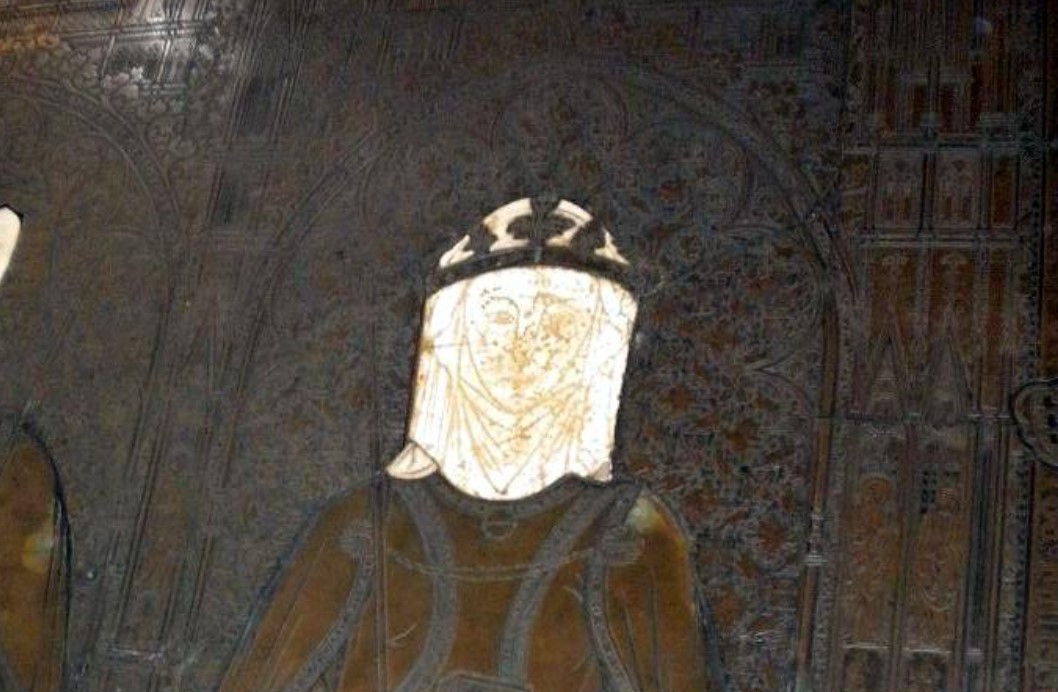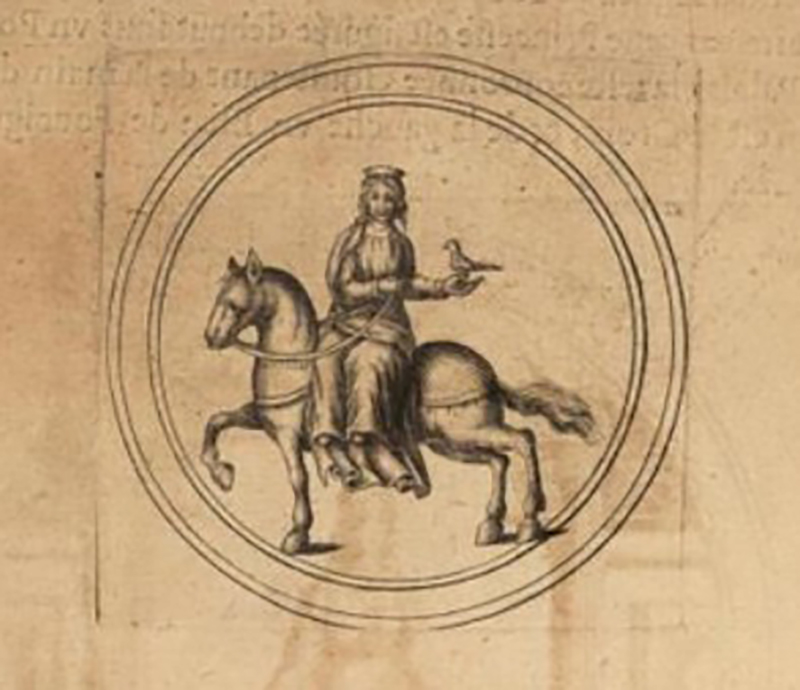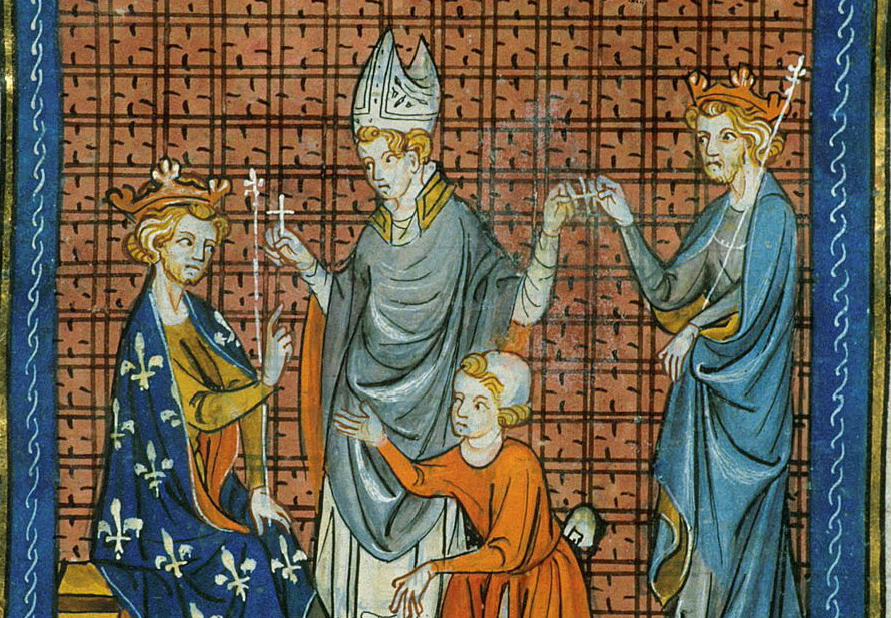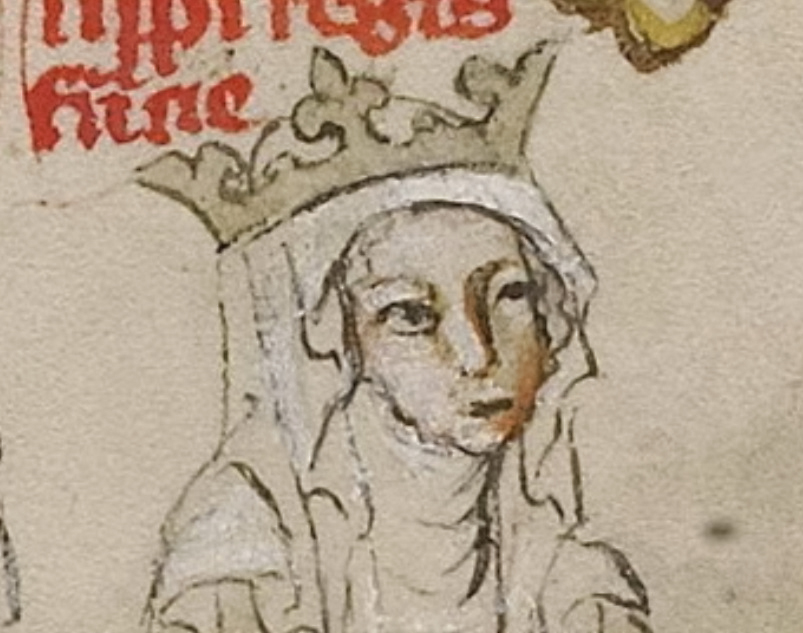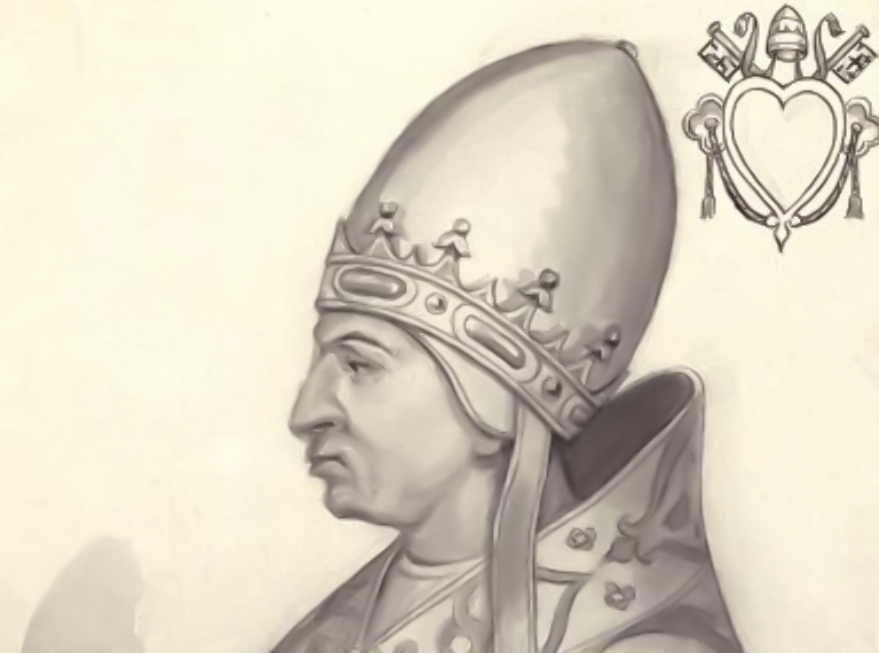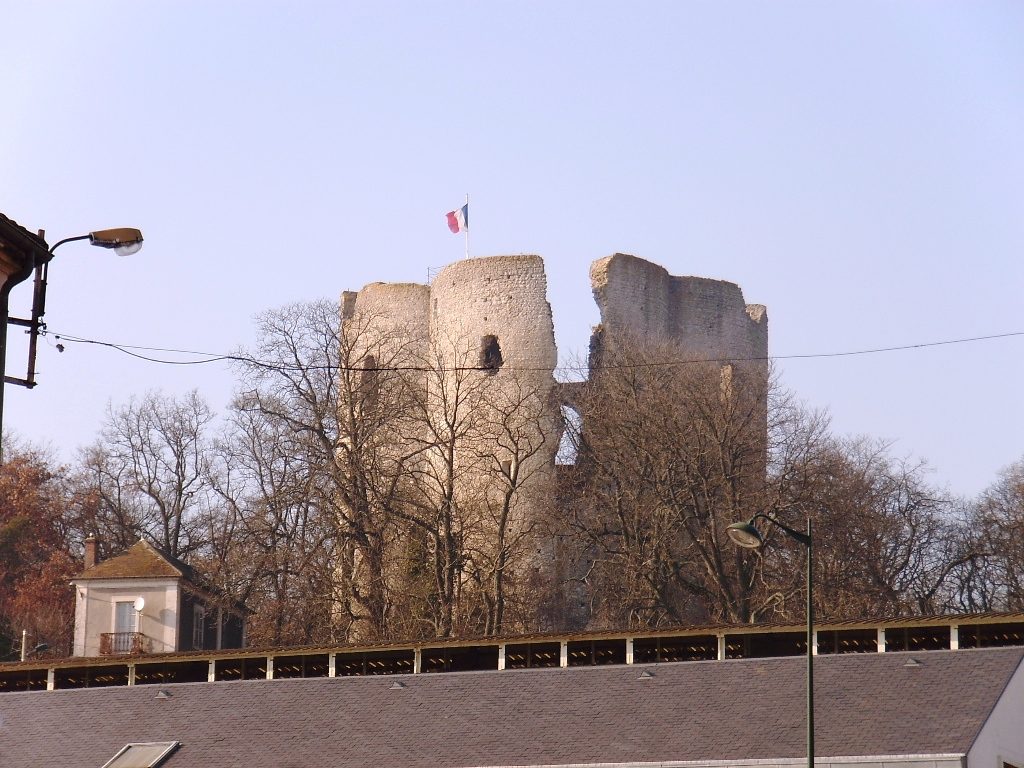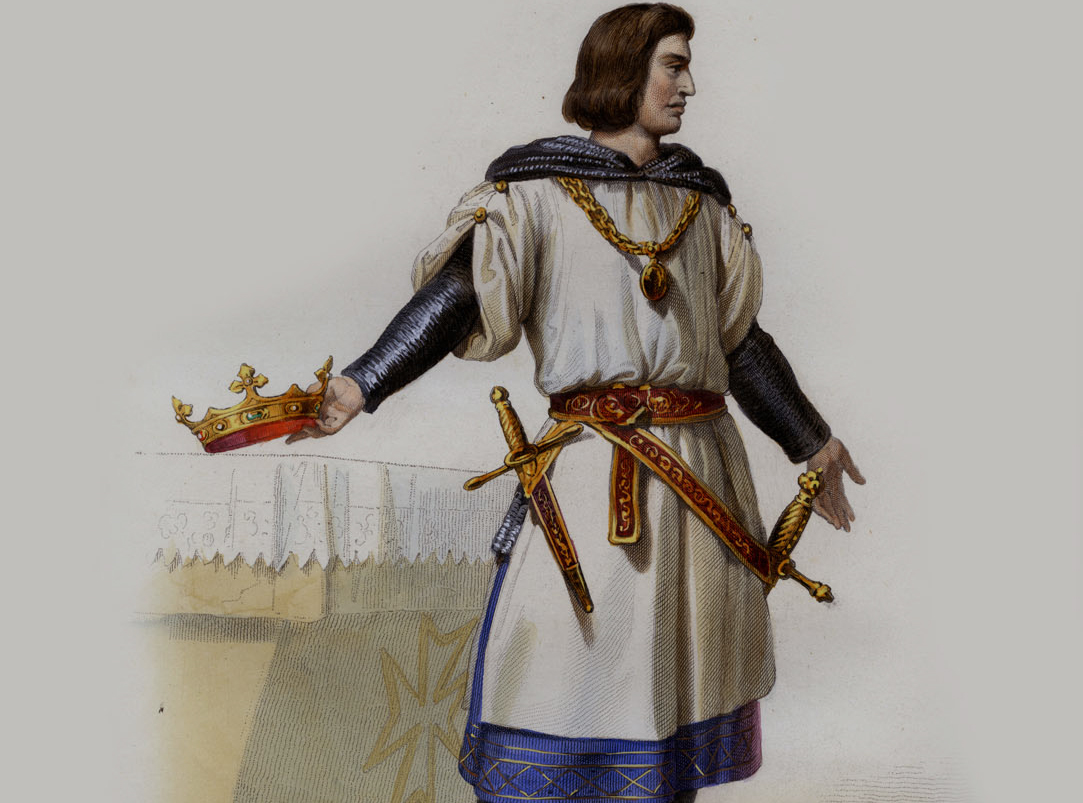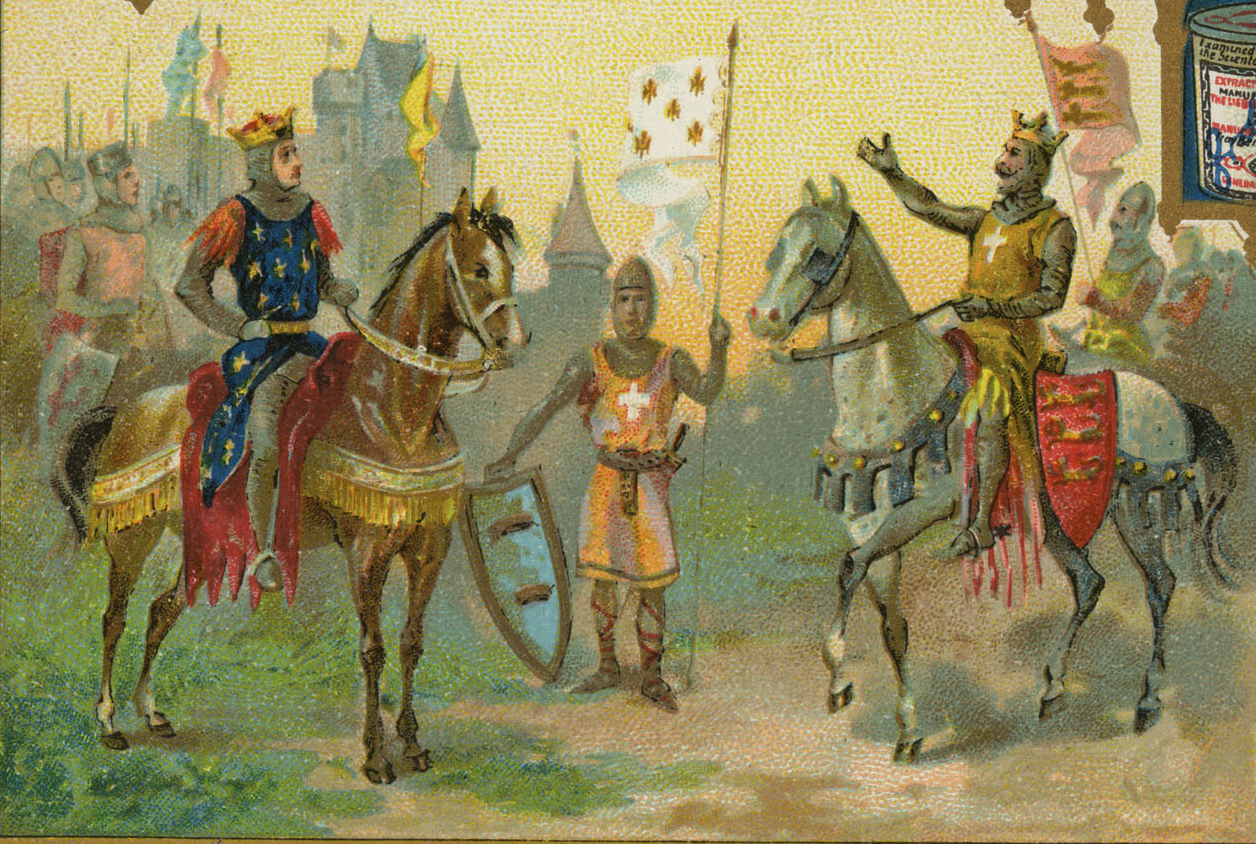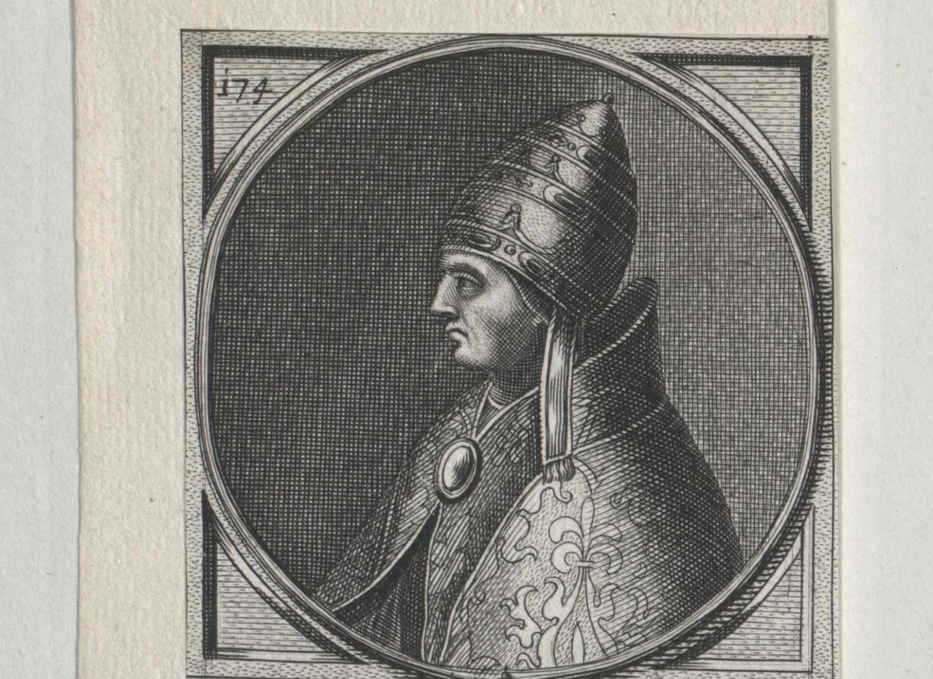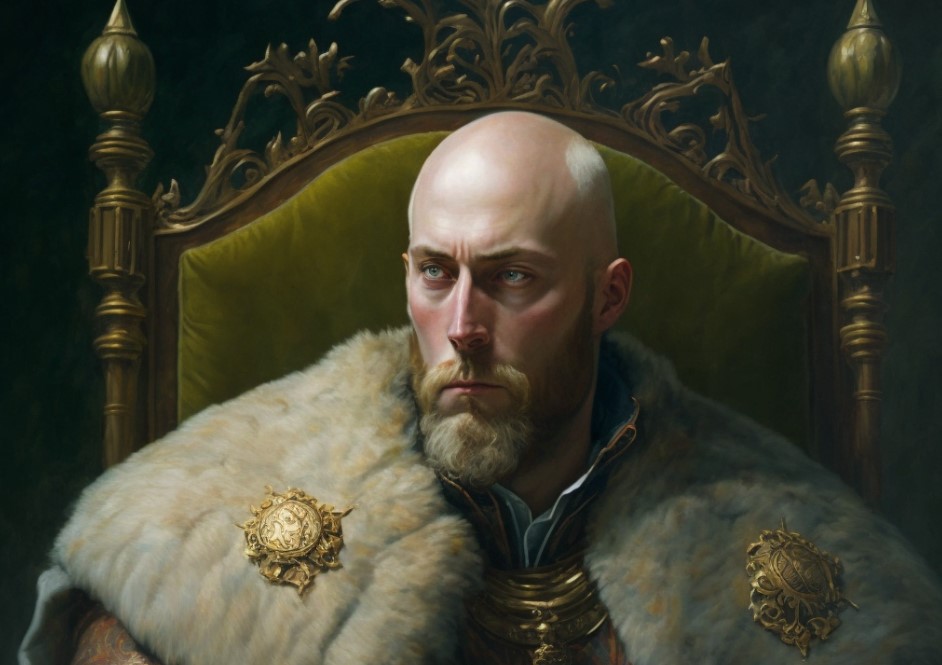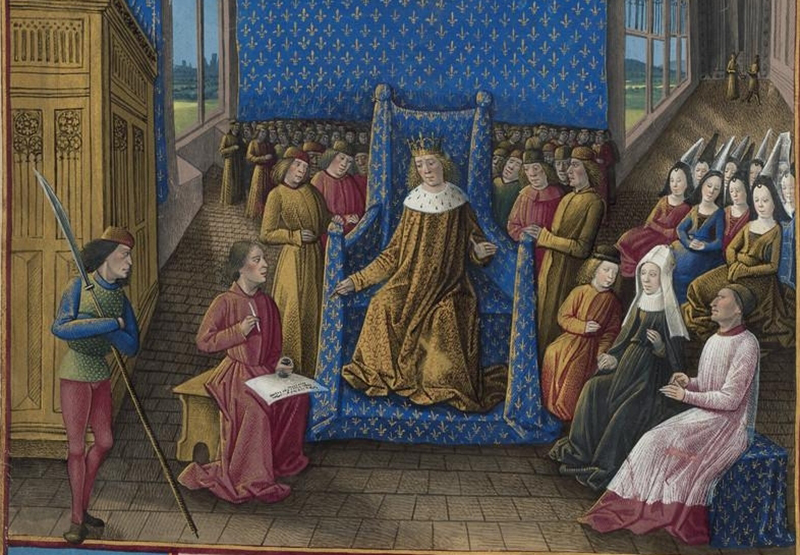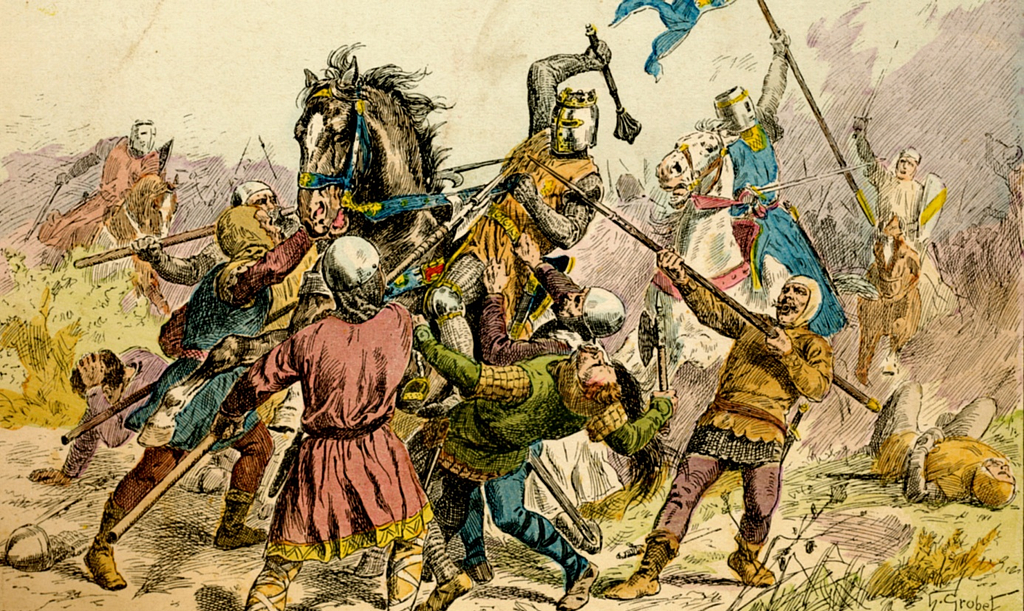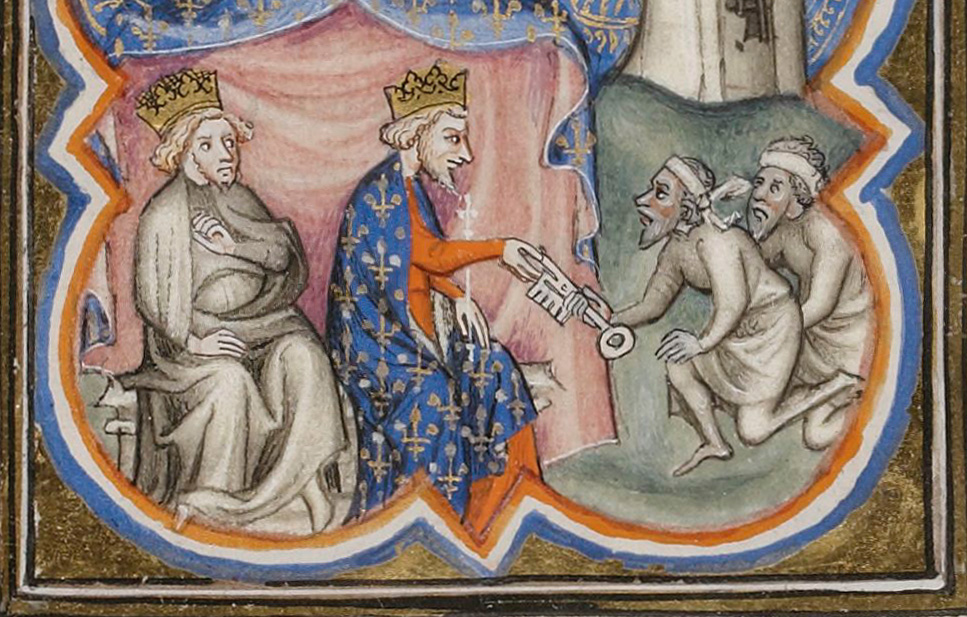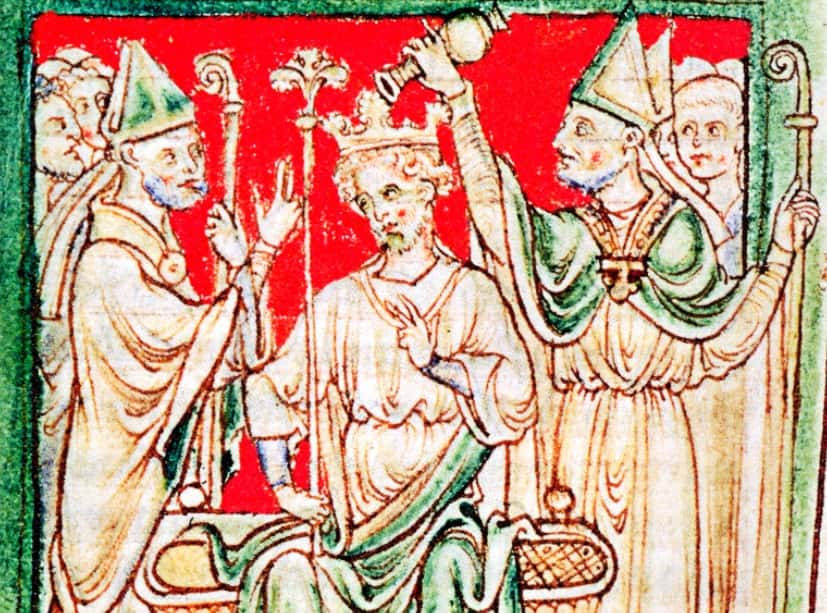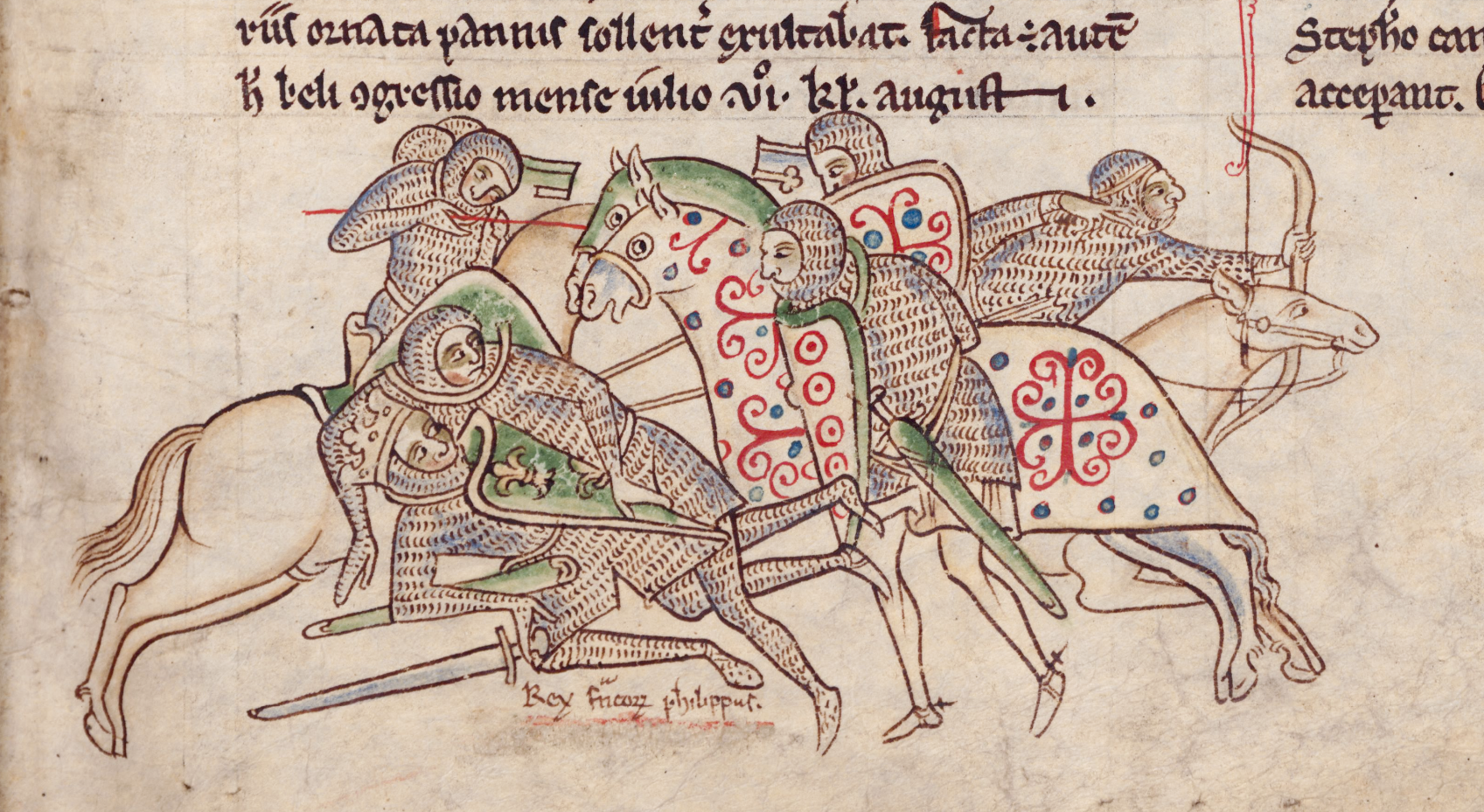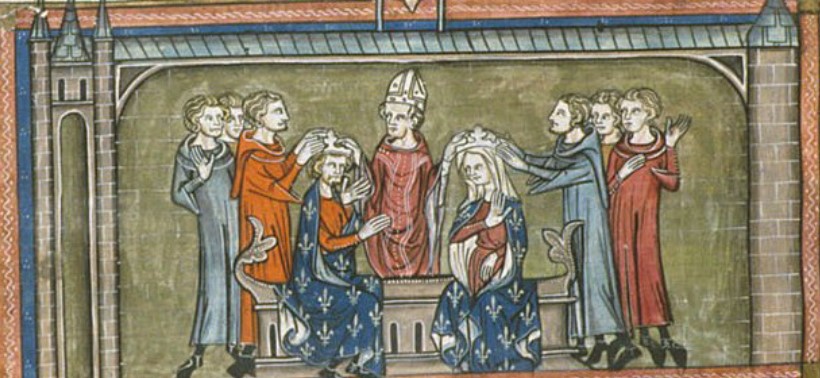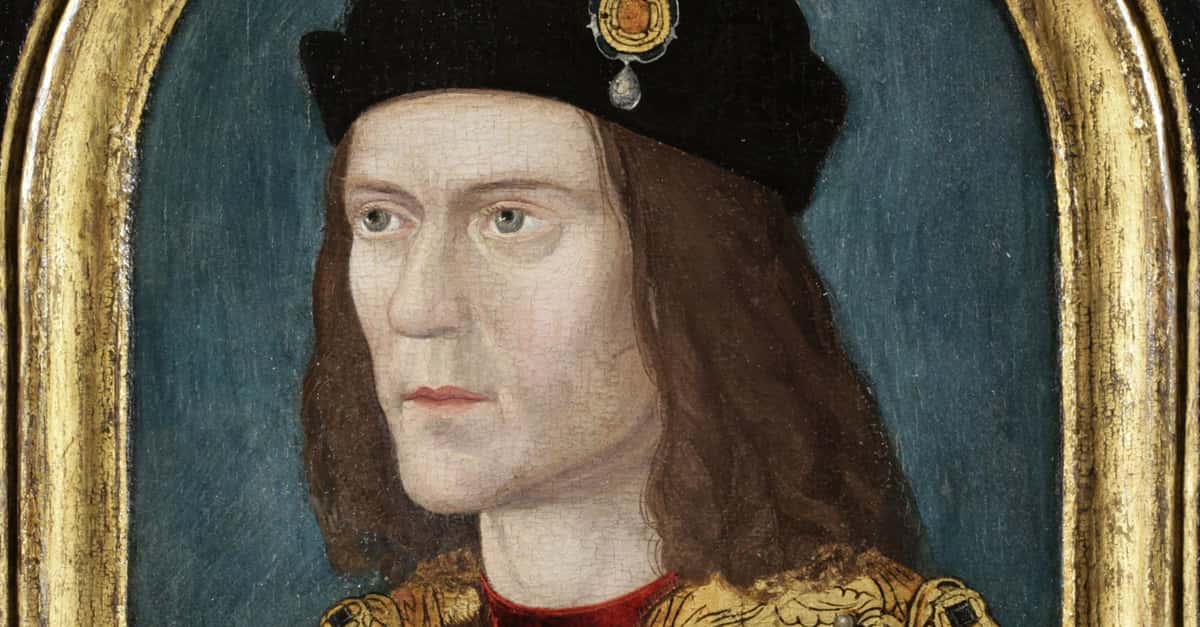For all the great things he did for France—including building the beautiful Louvre—we will likely remember Philip II for one thing. He was the French King who locked his wife in a tower. If it sounds like a fairy tale, think again. His wife spent 20 harrowing years in a tower, and there were no animated talking animals or long locks of hair to get her out. Philip was as tough as nails, but he had a reason for keeping away from his wives. It was a dark secret that he would take to his grave.
1. He Came From God
When Philip was born, in Gonesse on August 21, 1165, his dad was already really old. Because Louis VII was 45 when Philip was born, they gave the baby a nickname: God-given. After having four children with two different wives, Philip was the first son. Philip’s mother, Adela of Champagne, was the King’s third wife and was 25 when she had Philip.
Philip was a literal gift from god, as far as his father was concerned. But that came with its own kind of fear.
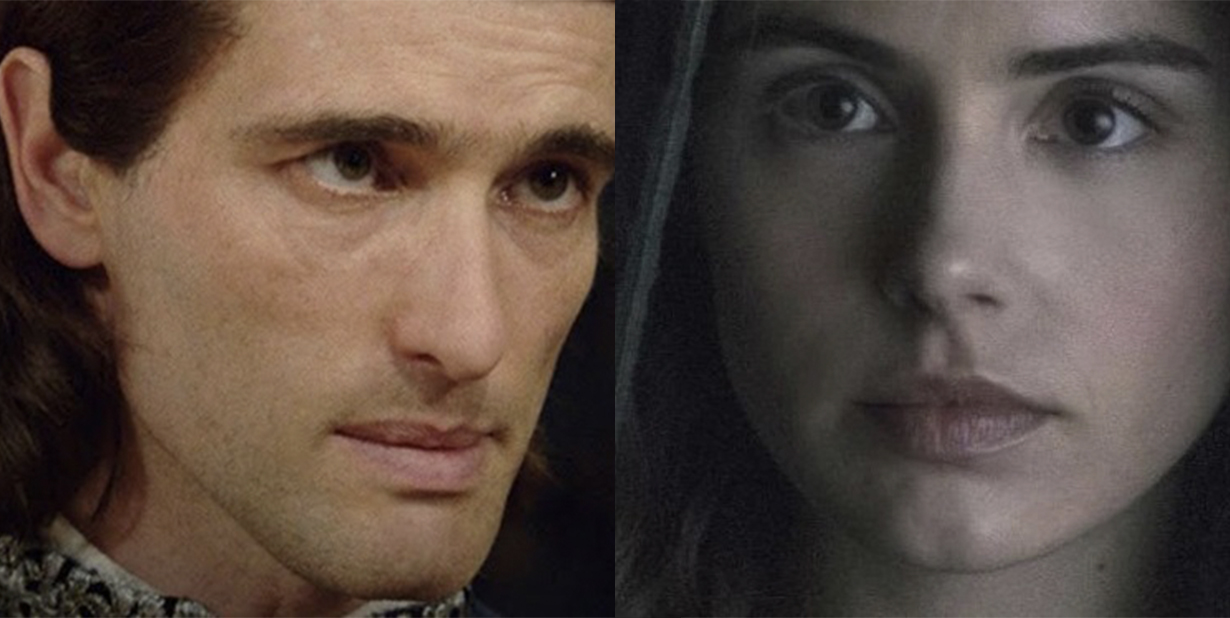
2. He Got Sick
Because of his age and ill health, Louis was in a hurry to get Philip declared his co-ruler. When Philip was just a teenager, Louis thought it was time. When father and son went on a hunting trip, however, the worst happened: young Philip became ill. Now, what they had on their hands was an aging and frail king and a sickly king-to-be. Things didn’t look good for Louis, so he took matters into his own hands—literally.
3. He Prayed Passionately
Louis’ solution to the problem of his ill son was to go on a pilgrimage. There was a Shrine of Thomas Becket that Louis thought would be able to cure his son. Once he got there, Louis fell onto his knees, clasped his hands together, and began to passionately pray for his son’s recovery. While still at the shrine, Louis got a message: Philip was in recovery. A very relieved Louis happily headed back home.
Unfortunately, Louis should have also been praying for his own health.
4. Neither Was Fit
On his way back from the Shrine of Thomas Becket, Louis suffered a terrible stroke. Wow, it seemed that neither Philip nor his father was healthy enough to be a lasting king. Too bad: There weren't any other options. They were the heads of the House of Capet. If neither of them was king, another house would take over—and that would be an unthinkable tragedy.
5. They Made Him King
Louis survived the stroke, but now he was even more desperate to make his son king. Philip was only 14 years old, but that didn’t matter. He was old enough to rule France...hopefully. On November 1, 1179, the Archbishop William of the White Hands anointed Philip the King of France in an elaborate ceremony. Once they’d settled that, they realized they needed something else: a queen.
6. They Were Just Kids
Louis was quickly trying to tie up loose ends before the end of his life. So, he came up with someone that could marry his son. Her name was Isabella of Hainault, and on her wedding day she was 10 years old and her groom was 14. The two may have been in the “eww yuck” stage when it came to the opposite gender, but that didn’t matter. This was a marriage of advantage—and it was a big one.
7. She Was Legit
So, who was this 10-year-old bride that Louis wanted his son to marry? Isabella's parents were a count and a countess—so they were legitimately royal. Isabella also brought with her a dowry. Now, this wasn’t a bunch of chickens and a bushel of grain. No, this dowry was a full county: the County of Artois. This large chunk of land would serve France well.
But even with that amazing dowry, not everybody was happy with this marriage.
8. She Wasn’t Wanted
The first, and most important person, who wasn’t happy with Philip’s marriage to Isabella was Philip’s mother. Believe it or not, Isabella—as young as she was—had another man she was supposed to marry. When Isabella was just one year old, her father promised her to Henry, who was not only the Count of Champagne, but also Adela’s nephew. Adela was not happy that her nephew lost his betrothed.
But, come to think of it, Adela wasn’t happy about a lot of things.
9. He Was Too Young
Adela wasn’t happy about her nephew losing his bride to Philip. She also wasn’t happy about Philip being king at all. She and Philip’s four uncles all thought that it wasn't a good idea for the ailing Louis to hand the throne over to Philip while he was still so young. Well, it turned out that Louis made the right decision. Less than a year after Philip became the king, Louis finally croaked.
They now had a 14-year-old king in charge of the country. How do you think that's going to go?

History's most fascinating stories and darkest secrets, delivered to your inbox daily.
10. He Got Down To Business
Philip was now king and he had something he wanted to do. His father had been quite friendly with Jewish people and even protected them. Philip didn’t have the same sympathy as his father. Soon after becoming king, Philip took away all of the Jews' property. He then made them convert to Christianity. But this was just the beginning. Two years later, he went even further.
11. He Wasn’t Done
Philip wasn’t through with his persecution of the Jews yet. In 1182, he kicked all the Jews out of the royal demesne—the land the royal family held. He also wanted to build a market in Paris called Les Halles. To build the marketplace he tore down houses; all of them owned by Jews. All terrible—but not nearly the worst part of Philip's prosecution. That goes to the burning of nearly 100 Jews in Brie-Comte-Robert.
Maybe you'd think a young king would be more merciful. Not the case with Philip II.
12. He Was Disappointed
In spite of Adela’s complaints, Isabella became queen on May 28, 1180, just a month after getting married to Philip. Now remember, Isabella was still just ten years old when she became queen. By the time she was 14, Philip was less than thrilled with her—for a very outrageous reason: she hadn’t produced a son yet. I guess being 14 was a little different back then than it is now.
There was, however, another reason for Philip to be angry at his wife.
13. He Was For The Other Team
Around the time that Philip was hoping for a son from his teenage bride, he was also fighting a battle against Flanders. In the midst of the conflict, he saw something that turned his stomach. His father-in-law—Isabella’s father—was supporting Flanders. How could he have a wife whose father was for the other team? That was it for Philip. In his eyes, his wife was a dud, and he had to get rid of her.
14. She Did Something Drastic
Isabella couldn’t give Philip a son, and her father was with his enemies. No wonder he wanted a divorce. It wasn’t, however, called divorce back then: They called it repudiation. Isabella found out that her husband wanted her out, and she realized that only something drastic would keep her married to Philip and—more importantly—the queen of France. So she came up with a plan.
15. She Dressed Down
To remain the Queen of France, Isabella needed to act. She stripped off her shoes and put on the clothes of a penitent—someone who was very sorry—and walked into the church. What she was trying to do was get sympathy from the people. She thought they would see her in bare feet and rags for clothes and maybe let her keep her position as queen. But could this really work? Were the people so easily manipulated?
16. They Yelled And Screamed
The answer is yes. The people saw poor Isabella and wanted to help her. A large group went to the palace and began to yell. They wanted to let the palace know that Philip could not just toss Isabella aside. They wanted her to continue to be their queen. Inside the palace was Philip’s uncle Robert—one of the ones against the marriage in the first place.
He heard the angry people, and he hatched a plan of his own.
17. He Had An Ulterior Motive
Robert knew he couldn't win against a crowd so strong and passionate, so he decided to stop Philip from repudiating his bride. Robert, however, had an ulterior motive. He knew that losing Isabella also meant losing the county of Artois. Isabella was here to stay—for now, at least. Her plan had worked, but if she wanted to stick around, she needed to get down to producing a male heir for her husband.
18. She Came Through
In 1187, when she was 17 years old, Isabella finally gave birth to a son, and they called him Louis after his grandfather. This would finally cement her position as the Queen of France. But Philip and Isabella weren't happy with just one son. Sure, baby Louis would be an heir to the throne, but having a few backups would be a good idea. Soon, Isabella was pregnant again.
19. It Was Doomed
In 1190 Isabella gave birth again. This time it was to twin boys—talk about going overboard to make a husband happy. It did, however, end up being a tragic birth for nearly everyone involved. The first child, Robert, passed on the same day he was born. The heartbreak, however, wasn’t over. The next day, Isabella died due to complications from the difficult pregnancy. Well, at least they still had her second son Philip. Sadly, he also passed—two days after his mother.
It was time to give poor Philip the bad news.
20. He Got The News
While all this tragedy was taking place, where was Philip? He was off doing what kings do: He was in Normandy battling it out with Richard I of England. The news of his wife’s—and twin boys’—passing led him to do something strange: He signed a quick truce and sped back to Paris. Once there, Philip checked that they had buried Isabella properly, mourned for about a week, and then immediately went back to Normandy.
I guess a king’s work is never done.
21. It Was A Big Day
Three years after his wife’s demise, Philip was in search of a second wife. Obviously, things were different back then. For example, nowadays some couples have two anniversaries: one for the day they met and one for the wedding day. For Philip and his next wife, the two days would be the same. You see they met and married on the same day. But how was this possible?
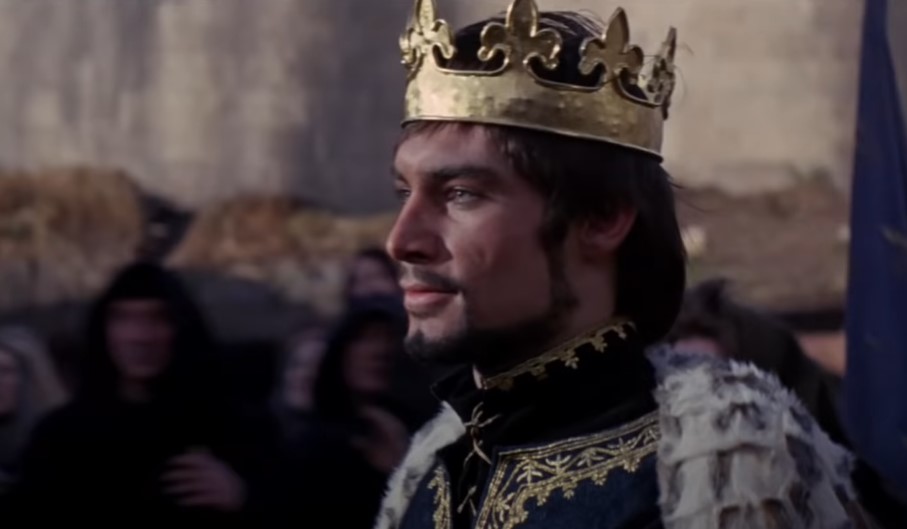 The Lion in Winter (1968), Haworth Productions
The Lion in Winter (1968), Haworth Productions
22. He Gave It Another Shot
It’s not exactly clear what Philip’s motives were for getting married this time. His bride was Ingeborg, whose father was the King of Denmark. Maybe it was the dowry that she brought to the marriage: a very significant 10,000 marks. It was a good sum, but was it worth getting married for? Judging by his behavior at the wedding, it seemed that Philip wasn’t sure why he got married either.
23. He Looked Unwell
At a dinner after the wedding, Philip was not looking well. Observers could tell something was wrong. Philip was visibly pale and sickly. It seemed like he couldn’t wait for the ceremony to end. Once the formalities were over, he sprang into action. He sent his new bride to a convent and went straight to the Pope. What he asked the Pope for was nothing short of unbelievable.
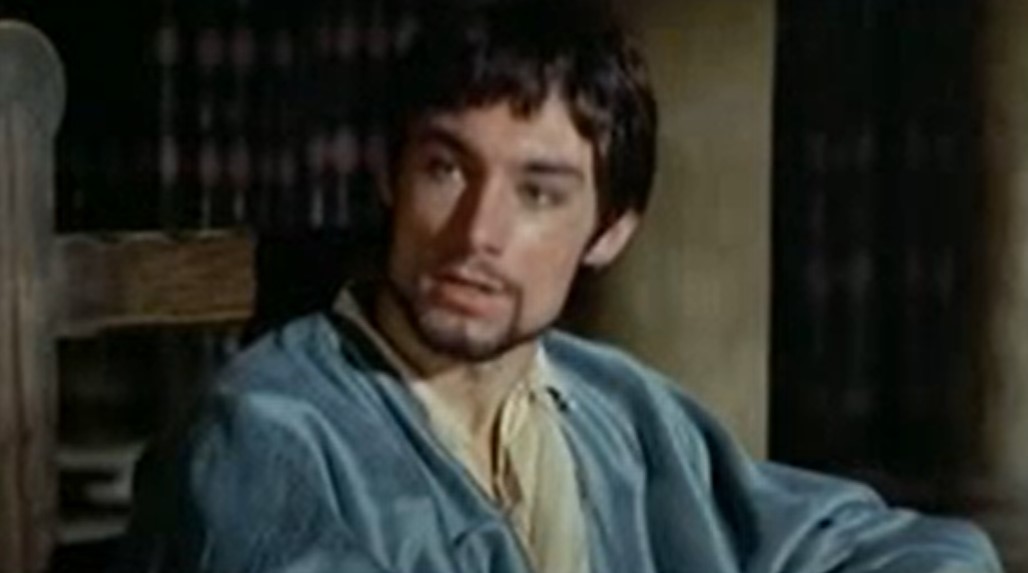 The Lion in Winter (1968), Haworth Productions
The Lion in Winter (1968), Haworth Productions
24. He Wanted Out
What Philip wanted from the Pope was an end to his new marriage—which was only a few hours old. Of course, Pope Celestine III was dumbstruck. How could Philip want the marriage annulled after such a short time? When he asked Philip why, the new groom said it was because he and his wife had not consummated the marriage.
And when was that to have happened, Philip? Between the main course and the salad? Obviously, Philip wanted out—but his reason made no sense.
25. He Said, She Said
Word got to Ingeborg that Philip was claiming that the two had never consummated the marriage. Her speedy answer was something like: “um… we absolutely did". This was becoming a very early version of the “he said, she said” game. Philip soon gave up on winning this, so he quickly locked on to another way to end his just-begun marriage.
 The Lion in Winter (1968), Haworth Productions
The Lion in Winter (1968), Haworth Productions
26. He Had A Plan B
Philip’s next plan was to prove that he and Ingeborg couldn’t be husband and wife because they shared family blood. While some royal families rely on cousin-to-cousin marriages, this one forbade them. Philip brought out a family tree that showed that he and his new wife came from the same family. A council inspected the tree, agreed with Philip, and voided the marriage.
There was only one problem: Philip’s family tree was totally fake.
27. She Wasn’t About To Give Up
The council may have voided her marriage, but Ingeborg wasn’t about to give up on being the Queen of France. To prove her husband wrong, she got someone to draw up a real family tree. Everyone who saw the tree could plainly see that there was no problem with Philip and Ingeborg being husband and wife. Now all she had to do was convince the Pope.
28. They Besought Him
A group of Danes set out to meet the Pope and talk to him for Ingeborg. They showed him the real family tree and the Pope agreed: They were okay to be husband and wife. Instead of punishing Philip, the Pope simply canceled the annulment and told Phillip that he couldn’t marry anyone else because he already had a perfectly good wife. The Pope’s decision was clear, but would Philip abide by the verdict?
 The Lion in Winter (1968), Haworth Productions
The Lion in Winter (1968), Haworth Productions
29. They Were Interrupted
Philip had already found a new bride—13-year-old Margaret—and she was en route from Geneva. Her father, William I of Geneva had approved of the match and was taking his daughter to Paris himself. On the way to Paris, however, the entourage came under attack from Thomas, Count of Savoy. When Thomas took one look at young Margaret, he decided he wanted her for himself. He forcibly removed Margaret from her father, and off they went into the sunset.
30. He Lost Another One
Poor Margaret was pretty much Thomas's prisoner, but soon something happened to count: he fell in love with the girl he’d taken by force. The only good thing to say about Thomas is that at least he was age appropriate. He was 15 years old to Margaret’s 13. They eventually tied the knot, had 14 kids, and lived happily ever after—or as happy as you can be when you consider the circumstances. Great for them, but Philip was still without a replacement for Ingeborg.
And what about Ingeborg? Where was she during all this?
31. He Locked Her Up
Philip had taken Ingeborg and put her in a prison. Well, the prison was a castle, so maybe it wasn’t that bad. The reality was that she was not free to go as she pleased. While he had Ingeborg locked away, Philip was free to play. Three years after their bizarre marriage, Philip had found another bride—I guess there was no shortage when you were the King of France. In June 1196, Philip married Agnes of Merania.
Of course, according to the Pope, this meant that Philip had two wives, which was a big no-no.
32. He Said It Wasn’t A Marriage
When the Pope got wind of Philip’s marriage to Agnes, he wanted to put a stop to it. He said that the marriage between Philip and Agnes wasn’t a marriage at all. Philip heard what the Pope had to say and did absolutely nothing. He continued to live with Agnes as husband and wife. Now remember there was no internet or phones, so it took a while for the Pope to find out. But when he did, he was more than a little angry.
33. They Were Out
When, in 1199, the Pope found out that Philip was ignoring him, he put all of France under an interdict. This meant that France was now outside of the world that the Pope had jurisdiction over. This was pretty serious business if your country is determined to be Catholic. This interdict lasted about a year until something tragic happened to change it. In the meantime, Ingeborg was still in limbo.
34. She Begged For Help
Ingeborg was still in a castle prison, and it turned out that it was certainly no day at the spa. She sent letters to Philip saying that the conditions she lived under were harsh. Her captors in the castle were mistreating her, and she was considering ending her life. Instead of showing his wife compassion, he just changed her location—and it wasn’t to a place that was better. In fact, it was much worse.
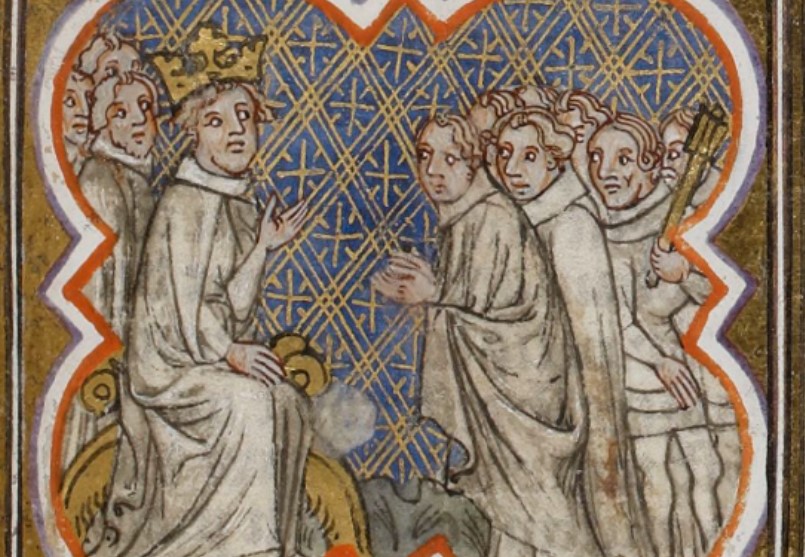 Picryl
Picryl
35. He Made It Worse
When Philip received news that his wife was in despair, he didn’t do anything to help her. In fact. He made her life even worse: He locked her in a tower. She was a prisoner in the tower, and to make matters even worse, her captors didn’t give her enough food to eat. To add to her discomfort, Philip didn’t allow her to have any visitors. Here she was, the Queen of France and living like a common criminal.
36. He Got The Boot
With his bride safely locked away, Philip continued living with his other wife—the one that the Pope had forbidden him to live with. Philip and Agnes had two children, and this made the Pope even angrier. After all, these children were illegitimate. The Pope then went a step further: He kicked Philip out of the church. You’d think Philip wouldn’t care about this. But he did care. He cared a lot. He promised that he would separate from Agnes.
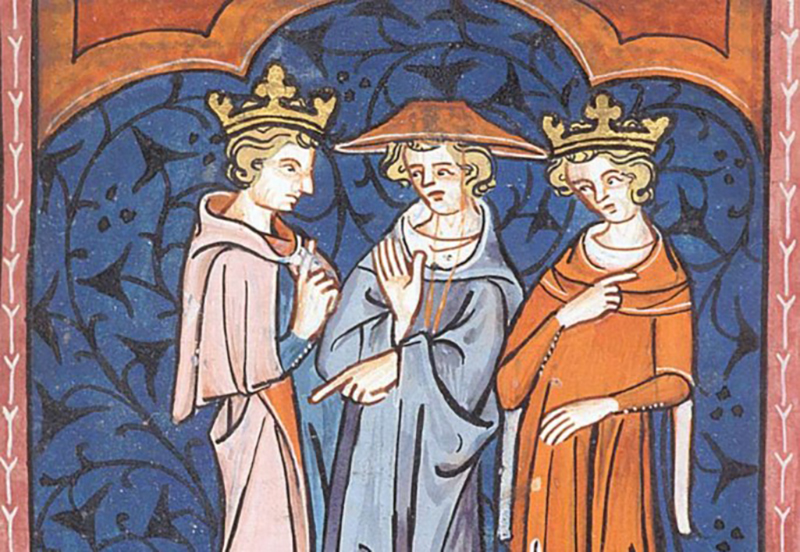 Picryl
Picryl
37. It Was Three Time Unlucky
Even though Philip and Agnes were officially separated, she somehow became pregnant with his third child. Child number three was unlucky for Agnes, and she died during delivery. Philip wanted the Pope to declare the children he had with Agnes legitimate, and—in 1201—he begged the Pope to grant him this wish. The Pope, who should have known better, decided to agree because this…well, it would help him politically.
The Pope seemed to now be on Philip’s side—which was going to make Philip’s life much easier. But could Philip count on the Pope for everything he wanted?
38. He Tried Again
Philip was now down to just one wife, but he still didn’t really want her. He made another visit to the Pope and again asked for an annulment of his marriage to Ingeborg. Of course, the Pope wanted to know the reason. So far, Philip had tried a lack of consummation and a false family tree as reasons for annulment. What else could he try?
39. He Went Out On A Limb
It was time for Philip to get really creative. This time he told the Pope that he needed an annulment because of witchcraft. He said that Ingeborg had used witchcraft, which made it impossible for the two to have marital relations. Even the Pope, who seemed to have Philip’s back at this point, couldn’t get on board with this idea. Philip was stuck with Ingeborg. A wife he had never seemed to want at all.
40. He Had A Change of Heart
Philip seemed to still have no interest in having Ingeborg as his wife. He did, however, want to have a claim to the throne of the Kingdom of England. He realized that the way to this throne would be easier because of Ingeborg’s ties to the Danish throne. Suddenly Philip wanted his wife back. But after all he’d done to her, did she really want to be with him? What did she see in him anyway?
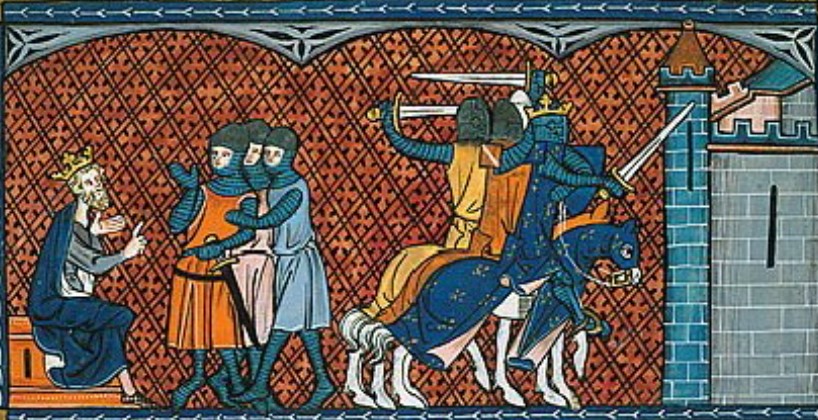 Picryl
Picryl
41. He Was Handsome
Philip, in spite of treating women badly, was a bit of a catch. By this age, he already had no hair, but people described him as “a handsome strapping fellow”. He enjoyed living well, which included drinking and fooling around with women. Sounds to me like a young Bruce Willis. But what about his personality, what was that like?
42. He Was Generous
Philip may have locked his wife in a tower, but to his friends he was generous. If he didn’t like you, however, you didn’t get much from him. He was quick to judge and was good at strategizing. When he came across a powerful man, he’d be very tough. If he came across someone poor, he’d likely feed them. Also, as we’ll see next, he held a grudge: even against someone as important as the Pope.
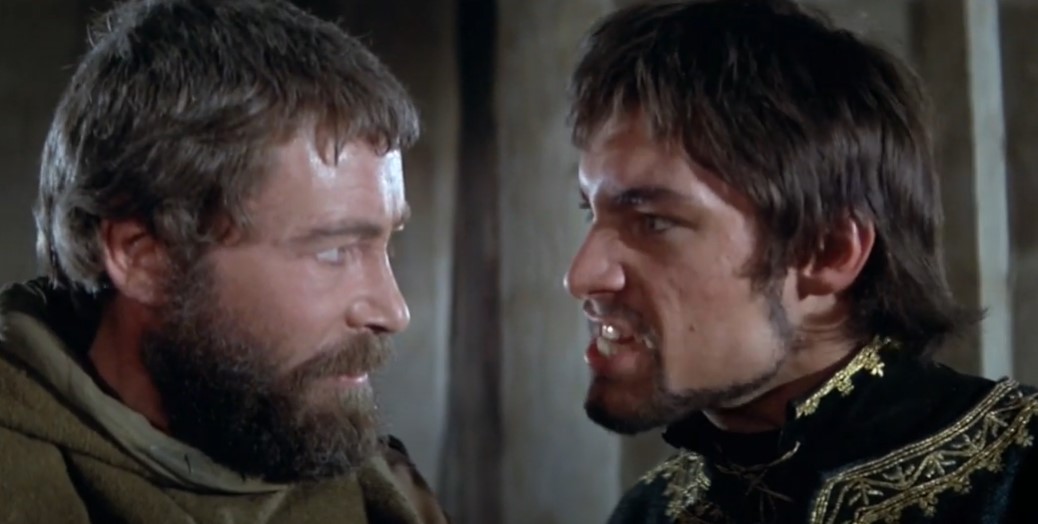 The Lion in Winter (1968), Haworth Productions
The Lion in Winter (1968), Haworth Productions
43. He Paid Him Back
While the Pope had sometimes supported Philip—and other times not—it was now time for the Pope to need a favor from Philip. There was a group of people in Languedoc who were living a life that went against everything the Catholic Church preached. The Pope asked Philip to help him straighten them out—with whatever force was necessary.
Philip seemed to only remember the times when the Pope didn’t have his back, and so he gave him the same treatment.
 Picryl
Picryl
44. He Built A Lot of Stuff
So, what good, if anything, did Philip do for France? He actually did quite a bit. One of the biggest and most useful was to get workers to pave the streets of Paris. He also built the marketplace, Les Halles. While Notre Dame de Paris was already under construction when Philip became King, he did make sure that they completed it. He also oversaw the construction of the Louvre. Of course, back then it wasn't an art gallery but a fortress.
All this construction was a huge boon for Paris and remains a draw for tourists today.
45. He Helped with Education and Drinks
Another area that Philip worked on was education. The University of Paris received a charter from Philip, and Paris became known as the “first city of teachers”. People were comparing it to Athens as far as being a great world civilization. He also helped the grape-crushing industry by creating The Battle of the Wines: a competition that helped make France a leader in all things red, white, and rose.
Probably the biggest change Philip made, however, was how France looked on a map.
46. He Stretched It
Before Philip, France was a third of the size it was after his reign. Through his sheer will and hard work, he got a hold of the land north of Loire that had long belonged to the English. This was a vital move as it got France to the sea in the north. He really did manage to bring France closer to how we see it on the map today. And what about that deep dark secret? It’s coming up next.
47. He May Have Played For the Other Team
No one ever figured out why Philip turned his back so strongly against some of his wives. In his 1966 stage play, The Lion in Winter, playwright James Goldman shed some light as to why. The play suggests that maybe Philip didn’t like women at all. In the play, Philip and Richard the Lionhearted are in fact lovers. Shocker! But is there anything behind this theory at all?
48. They Shared A Bed
There is something in the records that suggests that Philip and Richard were lovers. Apparently, the two kings spent at least one night together in the same bed. Let’s remember, one night between two men in a bed hardly makes Philip gay. But wait a minute: this is the only night that we know about—there may have been many more. On the other hand, some call the night more of a stunt in order to unify France and England and have even compared it to a “photo op”.
Sadly, I guess we’ll never know the truth.
49. He Felt Ill
In September 1222, when he was 57 years old, Philip became ill. Thinking it was the end, he wrote out his will. His sickness continued through to the next year, and his fever just got worse in the summer’s intense heat. When he started to feel a little better, he decided to take a trip to Paris. Halfway through his journey—in Mantes-la-Jolie—he passed. He was 58 years old.
50. He Had A Last Word
Before he passed, Philip had a chance to speak to his son, and the future king, Louis VIII. He told his son to treat Ingeborg well. Because of this parting message, Ingeborg could at least enjoy her remaining years. She’d been captive in castles and in a tower for 20 years, and she now lived as the legitimate Queen of France. Incidentally, she outlived Philip by a whopping 14 years.

